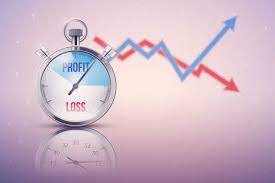
A successful trading strategy should consistently identify trading opportunities and provide the higher potential gains and lower potential losses. The measurement that compares potential gains and losses is called a Risk/Reward Ratio. The Risk/Reward Ratio is one of the key factors which determine the success of a trading strategy. A potential risk is usually calculated as a difference between a trade entry price and stop-loss price. A potential gain is a difference between a target price and a trade entry price. The Risk/Reward Ratio equal to the potential risk divided by the potential gain. This number can tell you whether a potential reward outweighs a potential risk. A potential profit is greater than a potential loss when the Risk/Reward Ratio is less then 1.
In reality, a potential risk is higher than a difference between a trade entry price and stop-loss price, since a sell price may be lower than a stop price. Most of the candlesticks patterns trading techniques don't have a price target. In order to estimate a potential profitability of the Candlestick trading techniques, we are using average historical gains and losses to calculate a Risk/Reward Ratio.
A low Risk/Reward Ratio is not the only factor that should be considered for a successful trading strategy. Another important factor to consider is the likelihood of reaching those targets. A profitable trading strategy should provide a Risk/Reward Ratio that offers higher potential profit than potential loss, and a reasonable chance of reaching the target before a stop loss.
To evaluate the candlestick patterns trading strategies performance, we calculated average historical Gain/Loss Ratio as a total percentage gains vs total percentage losses for each strategy. Our research shows that the best average historical Gain/Loss Ratio among the tested strategies was presented by the strategy that uses a Parabolic SAR as exit point and the stop-loss right at a pattern low price. We calculate an average historical Gain/Loss Ratio for each candlestick pattern in daily and weekly time frames. This information is provided when we review each candlestick pattern details.